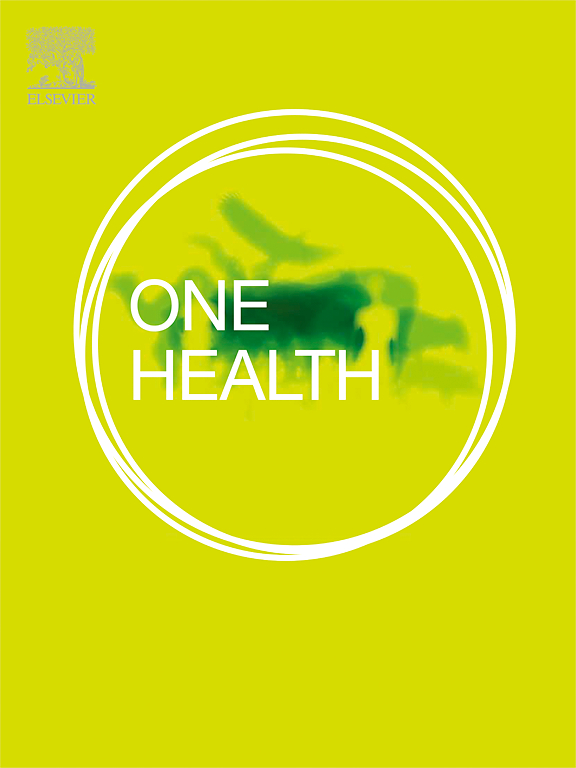Can the epidemiology of zoonotic disease be studied in routine health records? A feasibility study of the Clinical Practice Research Datalink (CPRD)
IF 4.5
2区 医学
Q1 INFECTIOUS DISEASES
引用次数: 0
Abstract
Zoonotic diseases pose significant challenges to public health, creating substantial societal and economic burdens. Current surveillance systems rely primarily on laboratory-confirmed cases and statutory notifications, which may underestimate true disease prevalence. This study investigates the feasibility of using routine electronic health records from the Clinical Practice Research Datalink (CPRD) as an alternative or complementary approach to zoonotic disease surveillance in the United Kingdom.
The objective was to compare incidence of zoonotic diseases reported by Public Health England (PHE) with new diagnoses observed in the CPRD and to assess the potential of routine healthcare records for epidemiological monitoring.
A comprehensive retrospective cohort study was conducted over a ten-year period (2009–2019), examining ten notifiable zoonotic diseases. Data were sourced from the CPRD, including primary care records, Hospital Episode Statistics, and Office for National Statistics death certification. Age-sex-standardised annual incidence was calculated using Poisson regression.
The study analysed 10,441 new zoonotic disease cases in CPRD over 152 million person-years, compared to 32,167 cases reported by PHE over 631 million person-years. Overall, there was good correspondence between CPRD and PHE incidence data (R-square: 0.571). Lyme disease emerged as the most common zoonotic disease in CPRD (3.67 incident cases per 100,000 person-years) while pasteurellosis was underreported.
The CPRD demonstrates potential as a complementary surveillance tool for zoonotic diseases. The study reveals both strengths and limitations of routine healthcare records in epidemiological monitoring, highlighting the need for integrated, multi-source approaches to disease surveillance including data-linkage with animal health records.
This research provides critical insights for developing more comprehensive zoonotic disease monitoring strategies.

人畜共患病的流行病学是否可以在常规健康记录中进行研究?临床实践研究数据链的可行性研究
人畜共患疾病对公共卫生构成重大挑战,造成巨大的社会和经济负担。目前的监测系统主要依赖实验室确诊病例和法定通报,这可能低估了真实的疾病流行情况。本研究调查了在英国使用来自临床实践研究数据链(CPRD)的常规电子健康记录作为人畜共患疾病监测的替代或补充方法的可行性。目的是比较英国公共卫生部(PHE)报告的人畜共患疾病的发病率与CPRD中观察到的新诊断,并评估常规医疗记录在流行病学监测中的潜力。在10年期间(2009-2019年)进行了一项全面的回顾性队列研究,检查了10种应通报的人畜共患疾病。数据来自CPRD,包括初级保健记录、医院事件统计和国家统计局死亡证明。使用泊松回归计算年龄-性别标准化年发病率。该研究分析了刚果民主共和国超过1.52亿人年的10,441例新的人畜共患病病例,而PHE报告的病例为32167例,超过6.31亿人年。总体而言,CPRD与PHE发病率数据具有良好的相关性(r平方:0.571)。莱姆病是刚果民主共和国最常见的人畜共患疾病(每10万人年3.67例),而巴氏杆菌病报告不足。CPRD显示了作为人畜共患疾病补充监测工具的潜力。该研究揭示了常规卫生记录在流行病学监测中的优势和局限性,强调需要采用综合、多来源的疾病监测方法,包括与动物卫生记录的数据联系。这项研究为制定更全面的人畜共患疾病监测策略提供了重要见解。
本文章由计算机程序翻译,如有差异,请以英文原文为准。
求助全文
约1分钟内获得全文
求助全文
来源期刊

One Health
Medicine-Infectious Diseases
CiteScore
8.10
自引率
4.00%
发文量
95
审稿时长
18 weeks
期刊介绍:
One Health - a Gold Open Access journal.
The mission of One Health is to provide a platform for rapid communication of high quality scientific knowledge on inter- and intra-species pathogen transmission, bringing together leading experts in virology, bacteriology, parasitology, mycology, vectors and vector-borne diseases, tropical health, veterinary sciences, pathology, immunology, food safety, mathematical modelling, epidemiology, public health research and emergency preparedness. As a Gold Open Access journal, a fee is payable on acceptance of the paper. Please see the Guide for Authors for more information.
Submissions to the following categories are welcome:
Virology,
Bacteriology,
Parasitology,
Mycology,
Vectors and vector-borne diseases,
Co-infections and co-morbidities,
Disease spatial surveillance,
Modelling,
Tropical Health,
Discovery,
Ecosystem Health,
Public Health.
 求助内容:
求助内容: 应助结果提醒方式:
应助结果提醒方式:


